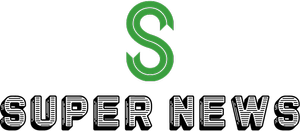Airport testing for Covid-19 is taking off from Europe to the U.S. Not only as a way of allowing travelers to bypass mandatory quarantine at their destination or back home, but to stave off the threat of a second wave of infections being imported by returning holidaymakers.
This is the key reason Germany is unfurling free state-funded Covid-19 test centers at all major airports. It also has privatized, paying setups at some air travel hubs.
The idea behind airport testing is that passengers land, take a quick test and wait for the result. If it’s negative, isolation ends. The wait time varies between one hour for “express tests” and three or more days.
The trend is gaining traction worldwide. As an increasing number of countries demand negative Covid tests on arrival, many are also setting up airport testing stations. Sometimes tests are voluntary; at others mandatory, at least for travelers coming from Covid hotspots.
Americans among others can expect to face increasing airport testing if they venture away from home. Starting August 1, passengers from some U.S. and other hotspots bound for Dubai will have to test twice: before leaving and on arrival.
As researchers push for solutions for faster, more portable Covid testing, and micro testing laboratories, the airport testing landscape is set to rapidly evolve.
Russia wants to make a one-hour wait airport test the standard. “The portable testing system fits in two small suitcases,” it says, and is “one of the fastest and most accurate in the world.” It’s already being used in Moscow (read on).
The testing process varies wildly from one place to another. Here are a few examples.
Ted Stevens Anchorage International Airport Alaska
In the U.S. airport testing seems limited mostly to Alaska. (At New York’s JFK, the testing site is reserved for staff). Thousands of travelers have opted for a test at eight airports in the state, rather than quarantine, since mid-June. The tests in Anchorage produced 13 positive cases in one week at the end of June.
Dusseldorf Airport Corona Test Centre
Frankfurt Airport Test Centre Medical diagnostics company CENTOGENE offers paying tests, both rapid and standard to all travelers. Some 25,000 have been tested in the past month.
Keflavik International Airport Iceland
Paris-Charles de Gaulle and Paris-Orly Airports
Sheremetyevo International Airport Moscow
Vienna Airport Health Centre For paying tests, the speed is usually linked to the price. A good illustration of that is in Vienna.
Many countries see testing as a way of allowing tourism to continue. Whereas quarantines tend to stifle it.
Now after the U.K. brought back mandatory quarantine for travelers to Spain, there are renewed calls for airport tests to help alleviate self-isolation rules. Something which is apparently planned at Heathrow soon, with trials of paying saliva swab tests, similar to one being piloted by the NHS. “People will have to pay around £140 for a test booked online before travel,” the BBC reports.
There is always the risk of false negatives. The WHO says rapid diagnostic tests are up to 80% sure. (There is also the rarer phenomenon of false positive results).
So this means some travelers will slip through the net. Skipping quarantine yet out in the community. Even if rapid (less accurate) tests miss some infected people, they can still have a significant impact on transmission says Dave O’Connor, a professor of pathology and laboratory medicine at the University of Wisconsin-Madison.
In a story in US Today, he argues for speedy tests taken frequently. In Germany, epidemiologist-politician, Karl Lauterbach, advocates follow-up tests for travelers, to improve the efficiency of airport screening. That can happen a few days after arrival he says, either at your family doctor or a special public testing centre. Together with the German Medical Association, he and other politicians think airport testing should be mandatory in order to succeed.
Either way, it is increasingly seen as a sure way of allowing travel to continue, even if there will never be zero threat.
All around the world, teams are working on tests to allow results in even less than an hour from the time they get a nasal swab. Some are tweaks on the classic PCR test reports Nature. Others think saliva-based tests are the future, offering results in 45 minutes without the invasive swab.
Meantime, those being offered at airports are one way of allowing travelers out, tourists in, and helping to keep the disease away.
I have three decades of experience as a journalist, foreign correspondent and travel writer-photographer. Working for print, digital and radio outlets on four continents,
I have three decades of experience as a journalist, foreign correspondent and travel writer-photographer. Working for print, digital and radio outlets on four continents, I am also a veteran hotel industry reporter and author of travel guides and cultural histories to Australia, France, Italy, Spain, Switzerland and Borneo. Very often on the road between my Paris and Australian bases, I write for Forbes with a globetrotters perspective and newsy edge on travel, culture, hotels, art and architecture. My passion is capturing the distinctive people, places and events I encounter along the way, both in words and pictures. I hold a degree in Professional Writing from Canberra University, an MA in European Journalism from the Université Robert Schuman Strasbourg, and am a member of the Society of American Travel Writers. A love for my wild home-island of Tasmania fuels my commitment to sustainable travel and conservation.

